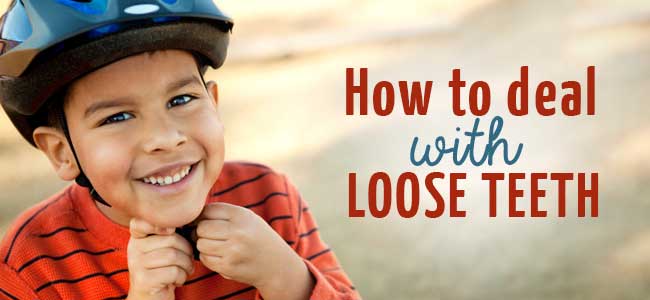
The weather is finally turning, and you only have a couple of months left to get the most out of your yearly dental insurance. Visiting the dentist may not be on your annual to-do list, but it is key to maintaining optimal oral health. With the holidays — and all of those treats and sweets — on the horizon, now is the perfect time to prepare and protect your pearly whites so you can enjoy the celebratory season that lies ahead.
Why Wait?
Along with dental benefits, FSA (Flexible Spending Account) and HSA (Health Saving Account) benefits expire at the end of the year. If you haven’t met your yearly maximum, the remaining amount likely won’t roll over into the next year, and you’ll lose your opportunity to make the most of those dollars. Also, if your insurance plan includes a deductible you’ve already met, it only makes sense to reap the full value of your insurance now, before the next plan year, when you have to meet the deductible again.
Benefiting From Your Benefits
Taking advantage of your unused benefits could save you hundreds of dollars. Routine dental exams can prevent oral conditions that are costly to correct. There is also a good chance the cost of your dental insurance will increase in the new year. Remember, you’re paying for your insurance, so getting the most out of it at its current price just makes sense.
What Can I Use My Benefits For?
If you are not experiencing an oral health emergency, a preventive approach to your oral health will save you money and discomfort down the road. Scheduling a regular visit with your dentist gives them an opportunity to protect and fortify your teeth against any health threats. They can also identify early signs of decay or emerging periodontal disease. When caught in the early stages, the effects of both of these conditions can be stopped and, in some cases, reversed.
Consider These Treatments
If you don’t need extensive work, consider using your remaining insurance benefits for the following:
- Cleanings
- Fluoride treatments
- Sealants
- Periodontics
To find out more about how you can get the most out of your dental insurance plan, call (661) 952-7865 today and talk to one of our professionals. We will help you figure out how you can maximize your oral health and maintain your beautiful smile.
More

Four Rare and Interesting Dental Anomalies
Everyone knows the saying, “Curiosity killed the cat.” Do cats have a saying for us? If they could talk, it would be along the line of, “Curiosity drives humans crazy until they find out what they’re looking for.”
In the dental world, there are many fascinating cases and conditions to find out about. Here are four dental oddities that will more than satisfy your curiosity for the time being.
1. Tooth Fusion
Teeth fusion happens when two separate teeth combine to become one bigger tooth. The teeth start out as two tooth buds, but join into one tooth above the gum. Other than the slightly bigger look of the tooth, you can also notice tooth fusion when the person has one less tooth than they should.
2. Concrescence
Concrescence, similar to fusion, takes place when two teeth join; however, in this case, the cementum, which covers the roots of your teeth, fuses below the gum. Appearance-wise, the teeth look normal, but underneath the gums the roots are joined together. Anomalies like concrescence demonstrate why x-rays are very important. If one tooth needs to be extracted, but it is affected by concrescence, your dentist will need to perform surgery to separate the two teeth.
While there are no health-critical issues involved with concrescence and fusion, your dentist should be aware of them and monitor them for cavities and other dental issues.
3. Hereditary Gingival Fibromatosis
This condition’s name may be long, but thankfully it is a rare dental issue, affecting only one in 175,000 people. Hereditary Gingival Fibromatosis (HGF) occurs when your gums overgrow your teeth. There are varying degrees of HGF, but common symptoms include abnormal tooth movement as well as difficulties chewing and speaking. While HGF is not a life-threatening condition, it does need to be treated to improve quality of life.
4. Shark Teeth
Shark teeth are actually more common than you’d think. They happen when children’s permanent teeth grow in before their primary (baby) teeth have fallen out, resulting in two layers of teeth, like a shark. Typically, shark teeth go away on their own. You just have to be patient and wait for the child’s body to do the work.
However, if the permanent teeth have fully grown in, and the baby teeth have yet to fall out, the tooth roots may not dissolve on their own. If the teeth get to this point, contact your Lancaster, CA dentist to extract the baby teeth.
If you or someone you know is affected by any of these dental rarities, there’s usually no need to worry. These conditions (except for HGF) most commonly happen to primary teeth, and the best thing you can do to address them is to go to your dentist for regular check-ups.
Resources:
http://www.ncbi.nlm.nih.gov/pmc/articles/PMC3354801/
https://dentistry.umkc.edu/Practicing_Communities/asset/AbnormalitiesofTeeth.pdf
http://oasisdiscussions.ca/2015/07/30/fctg/
More

National Down Syndrome Awareness Month: Dental Tips for the Developmentally Disabled
If you’ve ever taken care of someone else, you understand how difficult it can be to get them to brush their teeth and floss every day. When you’re caring for a child—or adult—with a disability, the challenges can be even greater, as they may be predisposed to certain oral health conditions. On top of that, going to the dentist can be stressful to anyone, let alone someone who’s not able to prepare for what to expect.
October is National Down Syndrome Awareness Month, and we would like to share a few tips you as a caregiver can do to make sure your loved one maintains a healthy smile.
Dental Issues for People with Down Syndrome
There are common mouth issues that are associated with Down syndrome. Being aware of these issues will allow you to prepare and understand what steps to take next.
Children with Down syndrome often wait twice as long for baby teeth to arrive–usually around 12 to 14 months. Along with delayed eruption, they may have missing teeth, or their teeth may emerge in a different order than usual.
People with Down syndrome have a smaller upper jaw, which will crowd the upper teeth, causing an unaligned bite. Orthodontics can solve this issue, but they can be problematic for younger children. You may want to wait until they are older.
Down syndrome also compromises the immune system, leading to a higher chance of periodontal disease (gum disease). However, the treatment for gum disease remains the same:
- Brush their teeth at least twice a day.
- Floss every day.
- Visit the dentist regularly.
X-rays and examinations are particularly important to monitor common mouth issues associated with Down syndrome.
How to Prepare for Going to the Dentist
Going to the dentist can be frightening for children or adults with Down syndrome or autism. Here are some steps you can take to make the visit to the dentist go as smoothly as possible.
Inform them of what to expect. Showing them what will happen while at the dentist’s office will eliminate their fear of the unknown.
Fraser has created a great app for children and adults with mental disabilities. It uses social stories and videos to educate kids on various dental topics, including the sounds they will hear and instructions they’ll receive at the dental office, as well as steps they can take to maintain their oral health at home:
My Healthy Smile
Before you bring your loved one in for care, schedule an appointment to meet with the dentist to explain how to best accommodate your loved one during a dental visit. As a side benefit, you will both have some time to establish a relationship with the dentist so everyone can be more comfortable with the process.
Taking care of a disabled person’s dental needs can be challenging. Here at the office of Douglas B. Weber, DDS, we want to make your visit an enjoyable and rewarding experience for everyone.
Contact us today to set up an appointment.
Resources:
http://www.ndss.org/Resources/Health-Care/Associated-Conditions/Dental-Issues-Down-Syndrome/
https://www.autismspeaks.org/sites/default/files/documents/dentalguide.pdf
More

My Kid’s Tooth Is Loose — What’s Next?
Being a parent is one of the most stressful tasks in a person’s life. Once you master one stage of your child’s life, they move on to the next stage with a whole new set of problems to figure out. Case in point: their mouth. You spend years ensuring their teeth come in healthy and clean, only for them to start to fall out. As much as we love to hear the types of methods used to remove loose baby (also called primary) teeth, there are issues that can arise from this type of removal.
How Do I Know When a Tooth Is Ready to Be Pulled?
A loose tooth can cause your child pain and discomfort. You may have the urge to pull it out, but there are a few reasons why that might not be the best idea.
- Be cautious of which teeth are loose first. The first teeth that come in are usually the first teeth to come out (the front teeth should normally become loose before the back teeth). A loose tooth could be caused by damage to that tooth — for instance, from a nasty fall. If you have concern that a tooth is loose due to something other than natural causes, contact your dentist for an examination.
- Primary teeth help guide in adult teeth. If a tooth is pulled prematurely, this can affect the placement of one’s adult tooth.
- Be aware of your child’s discomfort. If the tooth isn’t ready to come out yet, it will most likely still be connected to nerves, causing pain. Another indicator the tooth isn’t ready to come out yet is if there is a lot of blood when it’s pulled.
You Won’t Let Me Tie Their Loose Tooth to a Drone – What Should I Do Instead?
To keep things natural, a good rule of thumb is to do what cavemen did. They didn’t have doors and automobiles to attach their loose teeth to, did they? If your child indicates they have a loose tooth, be sure to monitor it. Some kids may become anxious thinking about their teeth falling out. If this is the case, be reassuring and encouraging throughout the process. Beyond that, they will do all of the work. Once they find out they have a loose tooth, they will wiggle it with their tongue or fingers, leading to it falling out in a less intrusive way. If the tooth seems fairly loose and you want to help out, use a piece of gauze and gently pull the tooth while doing a wiggling motion. You shouldn’t have to use much force at all, so if doesn’t come out with a gentle pull, it probably isn’t ready yet.
There are general guidelines of when teeth are expected to become loose and fall out, but every child will be different. If you are concerned with how long your child’s baby teeth have remained in their mouth, a dentist can determine if any of them need to be pulled, while considering the health of their future adult teeth.
Tips for Giving Your Child Healthy Adult Teeth
There may be a train of thought that since baby teeth fall out, there isn’t as much of a need to care for them as compared to adult teeth. This could not be further from the truth. Taking care of children’s teeth (and gums) sets them up for a lifetime of healthy teeth. While baby teeth do eventually fall out, they will have them for around 10 to 12 years. Not only will this set them up successfully for the future, but kids need a healthy mouth to enjoy the first part of their life as well.
- Brush their teeth after every meal. The ADA has great advice on how to brush kids’ teeth.
- When a tooth starts to become loose, be sure to floss underneath it as well. Food can get caught in any crevice and will become a buffet for cavity-causing bacteria.
- Watch for certain behaviors from your child like thumb sucking and tongue thrusting.
At Douglas B. Weber, DDS, we understand the importance of the role children’s teeth play in their health. Request an appointment online with your Lancaster, CA dentist for a consultation today.
More

Survive Allergy Season
Making the Best of Your Summer and Fall
For most parts of the country, summer and early fall are often filled with outdoor adventures. From enjoying the local water hole and hiking to classic barbecues and playing your favorite lawn game, the fun is endless. However, according to the American College of Allergy, Asthma and Immunology, for more than 23 million Americans, nature has created a buzzkill: ragweed. Ragweed may not be that person who signs up to bring only napkins and plastic cups to your barbecue, but the allergy symptoms of ragweed (hay fever) can make your eyeballs feel like an overfilled balloon. While the symptoms of hay fever can be merely uncomfortable and a nuisance, there are instances in which they can significantly hinder your daily life.
Hay fever includes the following symptoms:
- Itchy eyes and throat
- Nasal congestion
- Sneezing
- Runny nose
- Hives
- Coughing
If left untreated, symptoms can escalate to a sinus infection. Sinus infection symptoms can include facial pain, congestion, bad breath, coughing, and dental pain.
How to Fight Back
There are a few medicines, remedies, and practical tips you can use to help relieve symptoms and prevent hay fever altogether.
- Antihistamine: This is your typical allergy medicine. Some examples of over-the-counter brands include Allegra, Zyrtec, and Claritin. Before you use any new medicine, check with your physician to ensure it won’t interfere with anything else you may be taking or an existing health condition.
- Decongestant: This medicine will help if you are congested (facial pain, stuffy nose, and headaches). Sudafed and Afrin are a couple medicines that can help. Again, check with your physician before taking a new medicine.
- Humidifier: Keeping the air in your living space warm and humid can help relieve the symptoms of your allergies. Warning: If you are allergic to indoor nuisances (such as dust mites), using a humidifier can actually make your symptoms worse.
- Stay inside: Check your local weather for pollen counts and windy days. These are good indicators of when you should avoid being outside. If you’re using your air conditioner, it also helps to use a high-efficiency particulate air (HEPA) filter to prevent pollen from getting in.
- Allergy shots (immunotherapy): If you have tried other medicines and nothing seems to work, your physician may propose taking allergy shots. This is a series of shots that slowly allows your body to acclimate to the allergen causing your symptoms.
When to See a Dentist
If you have sinus infection and one or more of your upper teeth hurt, this is likely due to your maxillary sinus cavity not being able to drain properly. This puts pressure on your teeth, causing pain. While a sinus infection can be the cause of your tooth pain, your teeth may also be the cause of your sinus infection. If you deal with allergies, it may be hard to determine the cause of the pain in your teeth.
If you have a prolonged toothache, it is recommended that you go to your local dentist for an examination. A dentist will be able to determine whether there is an issue with your mouth that is causing your pain. If they do not find anything notable in their examination, they may refer you to a physician who can further assist you.
If you have had tooth pain with or without a sinus infection, call Douglas B. Weber, DDS today to schedule an exam with your Lancaster, CA dentist.
Sources Cited
“Allergic Rhinitis.” (n.d.). Retrieved July 28, 2016, from http://www.healthline.com/health/allergic-rhinitis#1.
“Allergies.” (2011). Retrieved July 28, 2016, from http://www.cdc.gov/healthcommunication/ToolsTemplates/EntertainmentEd/Tips/Allergies.html.
Feature, D. F. (n.d.). “Ragweed Pollen and Fall Allergies.” Retrieved July 27, 2016, from http://www.webmd.com/allergies/features/ragweed-pollen.
“Ragweed Allergy.” (2015). Retrieved July 28, 2016, from http://acaai.org/allergies/types/ragweed-allergy.
“The Causes of a Sinus Tooth Pain.” (n.d.). Retrieved July 27, 2016, from http://crest.com/en-us/oral-care-topics/tooth-pain/the-causes-of-a-sinus-tooth-pain.
“What’s the worst season for allergies? (2011)”. Retrieved August 03, 2016, from http://health.howstuffworks.com/diseases-conditions/allergies/outdoor-allergies/worst-season-for-allergies.htm.
More





